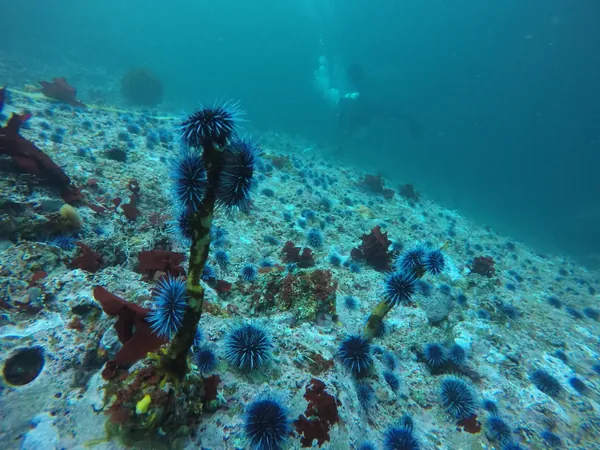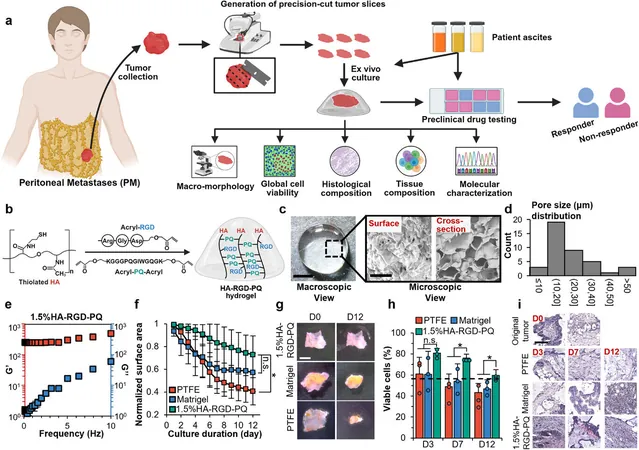
Unlocking the Future: A Game-Changing Model to Prevent Ecosystem Collapse
2025-06-13
Author: Siti
The Tipping Point Dilemma
Ecosystems are on the brink of collapse, and scientists are racing against time to decipher the warning signs. Once an ecosystem hits its tipping point, animal populations can plummet without warning, leading to a catastrophic loss of biodiversity. While identifying these critical points is one challenge, predicting the aftermath has remained a daunting mystery.
A Revolutionary New Approach
A groundbreaking study from researchers at the University of California, Santa Cruz, in collaboration with the National Oceanic and Atmospheric Administration (NOAA), now sheds light on the murky waters of what happens after ecological tipping points. Published on June 13 in PNAS, the research unveils a model that acts like a 'crystal ball,' enabling proactive interventions before it’s too late to save our ecosystems.
Eric Palkovacs, a leading author and professor of ecology, emphasizes the model's potential: "It provides a fundamental insight into predicting future events, allowing us to either prevent a transition or prepare for its impact and manage the consequences effectively."
Predicting the Unpredictable
In healthy ecosystems, species populations fluctuate in a delicate balance—like sea urchins feeding on kelp, then otters feeding on urchins. However, when this balance is disrupted, disaster can strike in an instant. For instance, if rising ocean temperatures cause sea urchins to devastate kelp forests, the resulting imbalance may lead to an irretrievable ecological crisis.
The team’s innovative model builds on historical trends, providing predictions even in data-poor scenarios, which is particularly pertinent in ecological studies where substantial datasets are rare. Unlike existing methods that rely heavily on detailed species information, this model focuses on broader patterns. By analyzing historical data, it can extrapolate future predictions even for different ecosystems.
Versatile and Impactful
To illustrate its effectiveness, the research team tested their model on two very different ecosystems. The first analyzed data from Lake Zurich, where pollution-induced phosphorus levels previously triggered a tipping point leading to excessive plankton growth and subsequent oxygen depletion.
The model successfully predicted when ecosystem management strategies would restore the lake to balance, proving that it can inform future conservation efforts in similar scenarios, such as tackling algal blooms in California’s Clear Lake.
In another experiment, the researchers employed their model on a controlled laboratory ecosystem involving a protist and two types of bacteria in test tubes. The model not only predicted known fluctuations but also simulated outcomes for conditions that had never been tested, paving the way for future research opportunities.
Collaborative Innovation
This interdisciplinary collaboration at UC Santa Cruz highlights the synergy between applied mathematics, machine learning, and pressing ecological challenges. As Steve Munch, a senior author and fisheries ecologist at NOAA, puts it: "UC Santa Cruz is uniquely positioned for this kind of vital research. Together, we can develop innovative solutions to the ecological crises that threaten our planet."





 Brasil (PT)
Brasil (PT)
 Canada (EN)
Canada (EN)
 Chile (ES)
Chile (ES)
 Česko (CS)
Česko (CS)
 대한민국 (KO)
대한민국 (KO)
 España (ES)
España (ES)
 France (FR)
France (FR)
 Hong Kong (EN)
Hong Kong (EN)
 Italia (IT)
Italia (IT)
 日本 (JA)
日本 (JA)
 Magyarország (HU)
Magyarország (HU)
 Norge (NO)
Norge (NO)
 Polska (PL)
Polska (PL)
 Schweiz (DE)
Schweiz (DE)
 Singapore (EN)
Singapore (EN)
 Sverige (SV)
Sverige (SV)
 Suomi (FI)
Suomi (FI)
 Türkiye (TR)
Türkiye (TR)
 الإمارات العربية المتحدة (AR)
الإمارات العربية المتحدة (AR)